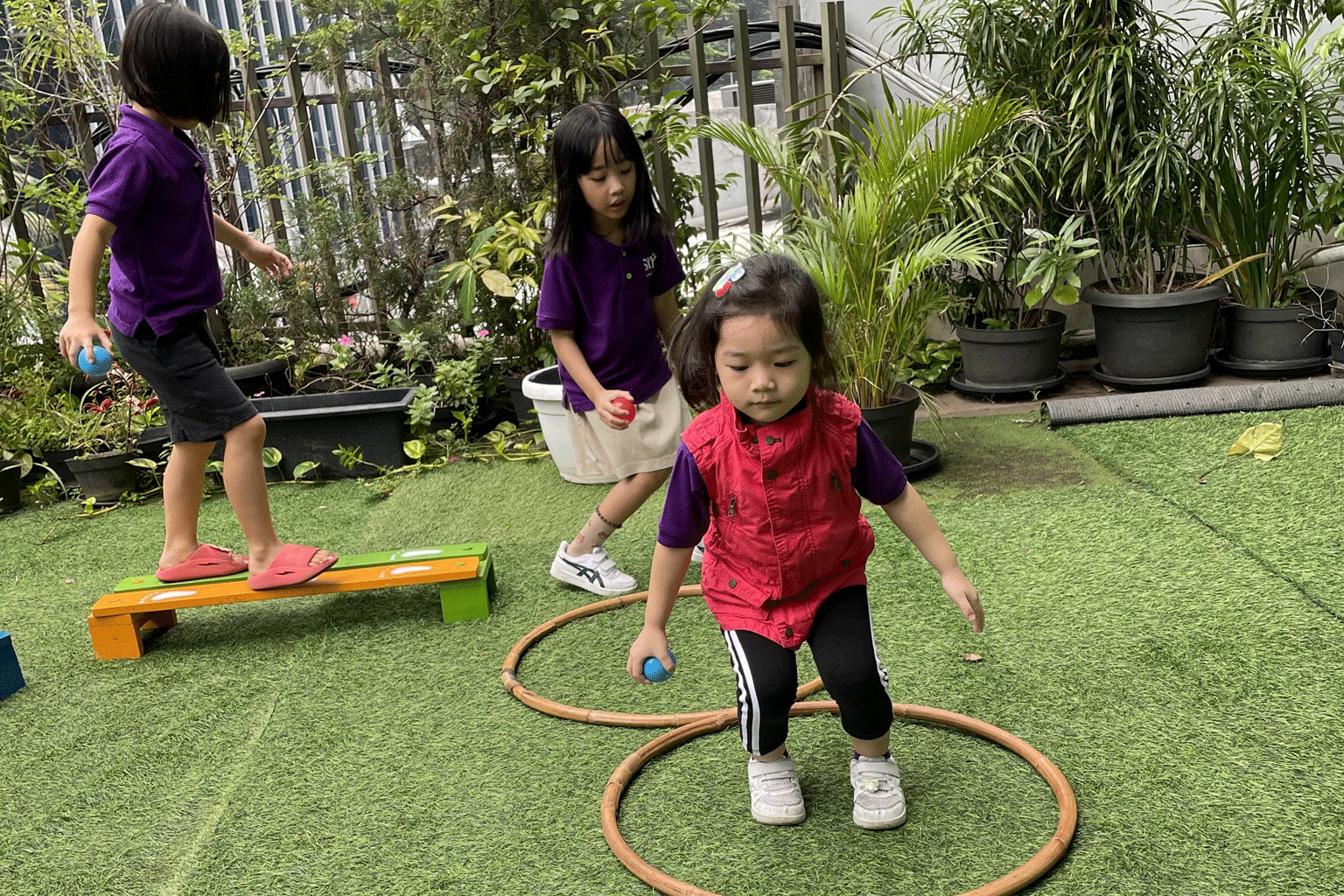Introduction: Toddlers are Wired to Wonder
Curiosity is a toddler’s superpower. They ask “why” endlessly, explore fearlessly, and learn best when their natural inquisitiveness is supported—not suppressed. But in a world filled with screens, schedules, and standardized expectations, keeping that spark alive takes intention.
That’s where the Reggio Emilia approach shines. Rooted in respect for each child’s individuality, Reggio-inspired early childhood education fosters exploration, expression, and connection that values deeply embedded in the culture of Sky Preschool, a top-tier institution with an “A” accreditation.
So, how can parents and educators support a toddler’s curiosity in a meaningful way? Here are 6 practical, research-based tips aligned with Reggio Emilia principles and brought to life at Sky Preschool.
1. Follow Their Fascination
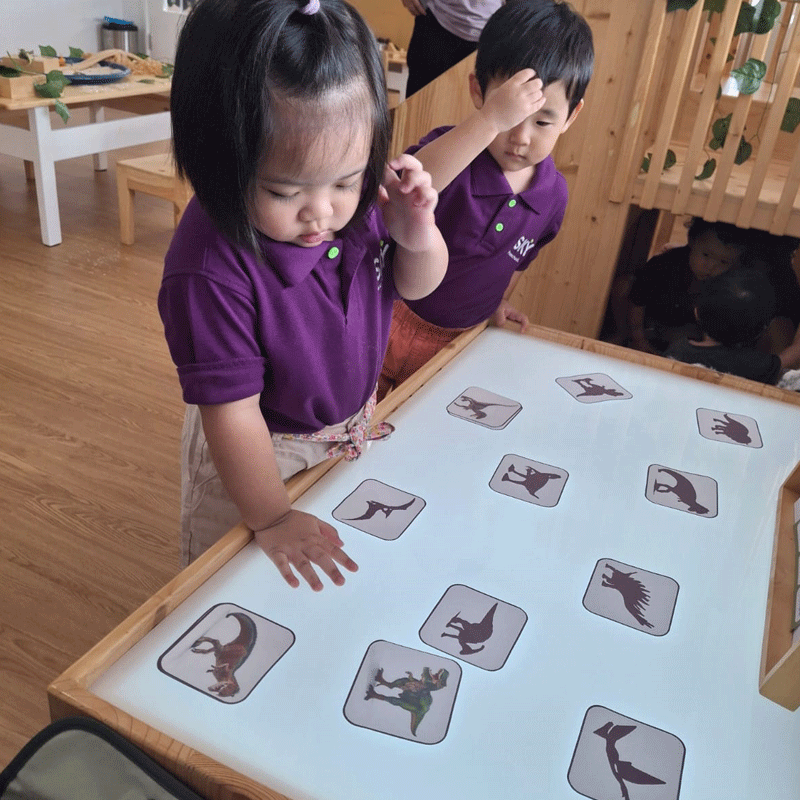
In Reggio-inspired classrooms, the child’s interest leads the way. Educators observe closely to find what excites a toddler whether it’s water play, insects, stacking blocks, or drawing spirals. These sparks of interest aren’t seen as distractions but as doorways into deeper learning. A child’s question about shadows might evolve into an entire project involving flashlight experiments, puppet shows, and stories about the sun. The goal isn’t to cover a set curriculum, but to nurture the child’s capacity to inquire, imagine, and investigate the world around them. This process strengthens critical thinking and reinforces that their ideas have value.
Try this at home
When your toddler shows interest in something—dinosaurs, puddles, the moon—lean into it. Read books on the topic, create DIY projects, or go on mini-adventures together. The more meaningful the activity, the deeper the learning. Ask what they want to know about it, and don’t be afraid to say, “Let’s find out together.”
At SKY Preschool
Projects often begin with a single question from a child. That question can turn into a week-long exploration where kids research, build, paint, or even role-play their discoveries—turning curiosity into capability. Teachers carefully document the journey, ensuring every idea, experiment, and “a-ha” moment is celebrated. This approach helps each child feel seen, heard, and empowered to take ownership of their learning.
2. Create a Yes Space
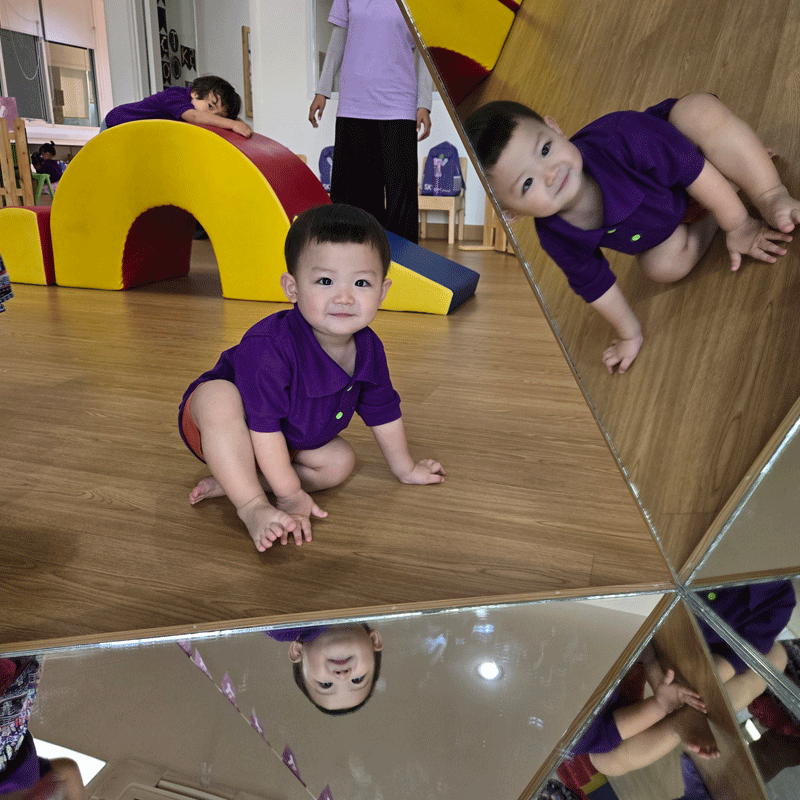
Toddlers love to explore, but many environments say “no” more often than “yes.” A Reggio Emilia classroom is carefully designed to say “yes” to safe exploration—through accessible materials, natural light, and open-ended tools that invite wonder. These spaces are not chaotic; they are intentionally structured to spark autonomy and discovery. Everything—from the placement of objects to the texture of materials—is chosen with the child’s experience in mind. When children are trusted to explore safely, they begin to develop confidence, independence, and responsibility from a young age. A “yes space” also reduces power struggles and encourages natural, joyful learning.
Try this at home
Design a curiosity corner. Use low shelves with interesting objects, mirrors, sensory bins, or safe tools for self-expression. Limit rules to safety guidelines, not convenience. Let your toddler touch, carry, build, rearrange—knowing the space was made for that. It doesn’t have to be big or expensive; even a quiet nook with baskets of natural objects can spark hours of exploration.
At SKY Preschool
Classrooms are full of natural materials, child-sized furniture, and calming aesthetics that feel more like a home studio than a typical classroom. Children are encouraged to move freely, investigate, and take initiative. The setup invites gentle exploration and builds trust in the child’s instincts. Every area is an invitation—whether to paint, build, sort, or simply wonder—empowering children to feel in control of their environment and their learning.
3. Let the Environment Speak
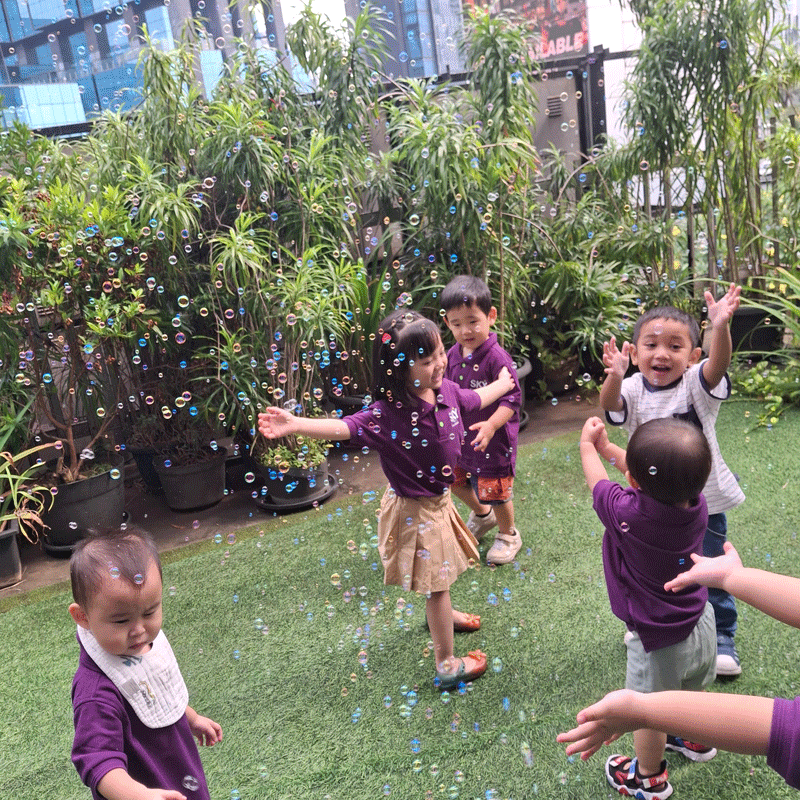
In Reggio Emilia, the environment is often called the “third teacher”—after parents and educators. That means the space itself is designed to spark questions, foster independence, and encourage deep engagement. Every corner, surface, and material has a purpose. There’s no clutter—just calm, intentional beauty that invites focus. When toddlers walk into such a space, they don’t need constant direction. The materials speak for themselves, guiding children toward creative problem-solving, discovery, and experimentation. Even silence has value, giving children space to think and wonder.
Try this at home
Reimagine a part of your home as a thinking space. You don’t need to buy anything new—start with arranging everyday objects mindfully. Add plants, display your child’s artwork at their eye level, use natural baskets instead of plastic bins, and reduce visual noise. The goal is to create a space that whispers, “Come explore,” not shouts, “Clean me up!”
At SKY Preschool
Every environment is treated as a silent partner in learning. Walls display authentic student work, mirrors reflect light and movement, and nature is always part of the setup—from potted herbs to rain-viewing windows. These carefully curated spaces empower children to make decisions, find patterns, and take ownership of their surroundings. In such environments, even toddlers learn to collaborate, tidy up, and think like little scientists. That’s because the space itself teaches them how.
4. Ask, Don’t Tell
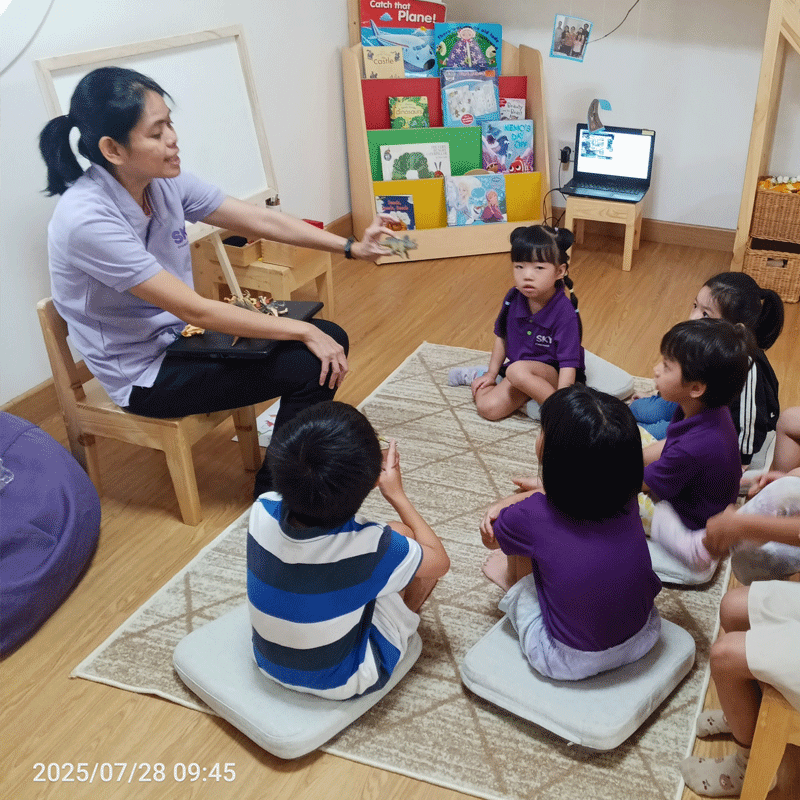
In traditional settings, adults often give toddlers instructions: “Don’t touch that,” “Draw a tree,” or “Sit still.” But in the Reggio Emilia approach, educators ask instead of instructing. Questions like “What do you think will happen if…?” or “How could we build this together?” shift the power dynamic. This approach respects the child’s thinking process and builds confidence. When adults are genuinely curious, children become more expressive, creative, and eager to participate.
Try this at home
Replace commands with open-ended questions. If your toddler spills water, instead of reacting with “Be careful!” try, “What should we do next?” or “How can we clean this together?” If they’re stacking blocks, ask, “What would happen if we added one more on top?” These moments show your child that their ideas matter, and they begin to see challenges as chances to think.
At SKY Preschool
Every moment is a conversation—not a lecture. Educators sit at eye level, listen closely, and ask thoughtful questions that make children feel seen and heard. Whether it’s during snack time or a group project, teachers resist the urge to correct or dictate. Instead, they explore possibilities with the child. This approach transforms even simple moments—like drawing with crayons or building with clay—into meaningful exchanges that fuel language, logic, and emotional growth.
5. Display Their Work Proudly
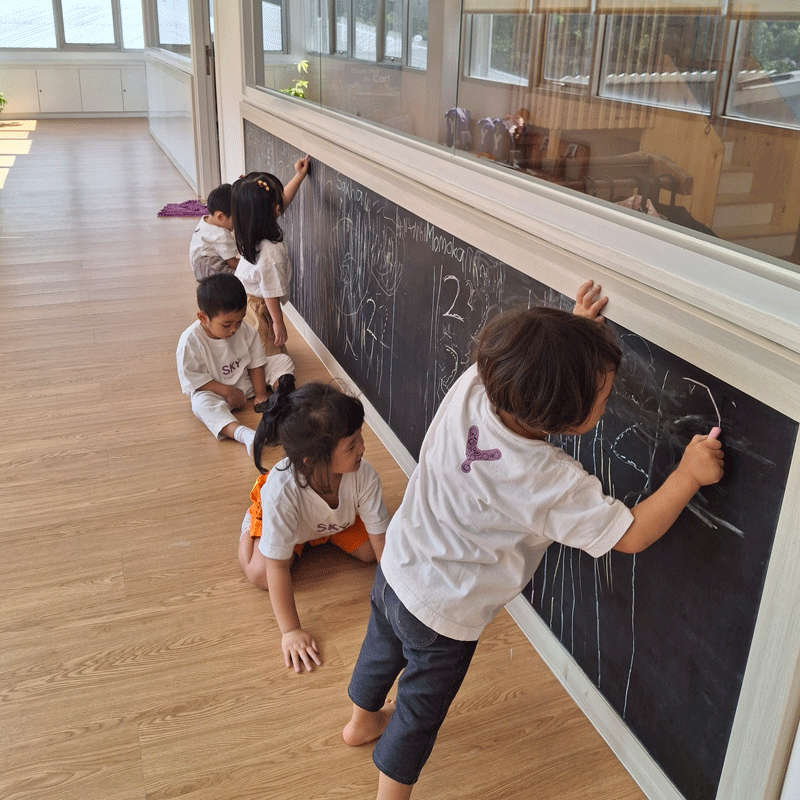
In Reggio Emilia settings, children’s creations are not just hung up—they are honored. Every scribble, sculpture, or group project is treated like an important artifact. When a toddler sees their artwork displayed at eye level or curated like a mini exhibition, it tells them: what you make matters. This validation fuels pride, encourages effort, and builds a deep internal motivation to express and explore more.
Try this at home
Create a rotating “gallery” in your living space. Use clips, frames, or shelves to showcase your toddler’s evolving creations. Change them regularly and talk about each piece—what inspired it, what tools were used, and what they might want to try next. This not only boosts confidence but also helps toddlers revisit and reflect on their learning.
At SKY Preschool
Every hallway and classroom tells a story through children’s work. Walls feature collaborative murals, storyboards, photographs of projects in progress, and even thought bubbles with the children’s own words. Rather than filling walls with store-bought posters, the environment reflects the voice and imagination of the children themselves. These displays aren’t just beautiful—they’re intentional learning tools that document progress, spark conversation, and give toddlers a deep sense of ownership over their learning journey.
6. Embrace Their Emotions
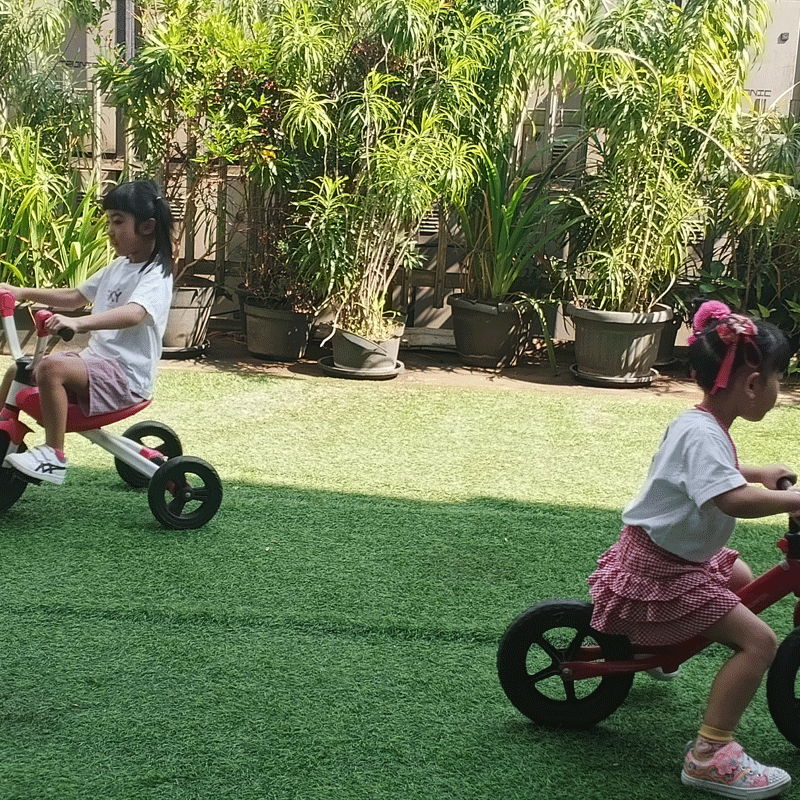
Tantrums, tears, giggles, and big feelings—toddlerhood is an emotional rollercoaster. In the Reggio Emilia approach, emotional development is just as important as cognitive or motor skills. Instead of dismissing outbursts or forcing cheerfulness, children are encouraged to recognize, name, and express their feelings in healthy ways.
Try this at home
When your toddler is upset, kneel to their level and say, “It’s okay to feel angry. I’m here with you.” Help them identify their emotions by labeling them: “You look frustrated because the blocks fell.” Offer choices that validate their feelings—“Would you like a hug or some quiet time?”
At SKY Preschool
Emotional expression is part of the curriculum. Classrooms include cozy corners where children can calm themselves, books that explore feelings, and daily practices that teach empathy. Teachers model respectful communication and offer emotional language that toddlers can use—turning even difficult moments into chances for growth and connection. This focus on social-emotional learning lays the groundwork for resilience, confidence, and strong relationships in the years ahead.
Why Sky Preschool is the Ideal Reggio-Inspired Environment
At Sky Preschool, curiosity isn’t managed—it’s celebrated. As a top-tier early childhood institution with Grade A accreditation, Sky Preschool integrates the Reggio Emilia approach not just as a method, but as a mindset. Every aspect of the school is designed to respond to toddlers’ evolving needs, interests, and emotions. Children are not expected to adapt to the school—the school adapts to them.
Each classroom becomes a laboratory of wonder, where natural materials, meaningful provocations, and open-ended tools spark imagination. Teachers act as guides and co-learners, listening deeply, documenting progress, and designing learning experiences that grow from the child’s voice. Every moment is an invitation to explore, express, and connect.
The partnership with parents is a key pillar. Families are welcomed as collaborators in the learning journey, with regular updates, reflections, and two-way communication. This fosters a consistent, nurturing, and respectful environment both at home and in school.
At Sky Preschool, children are not hurried or molded. They are heard, seen, and supported to unfold into who they truly are—confident, compassionate, and curious little humans who love to learn.
Conclusion: Raising Curious Humans Starts Early
You don’t need a perfect plan or a Pinterest-worthy playroom to nurture curiosity. Toddlers aren’t looking for perfection—they’re looking for connection. What they need most is your presence, your patience, and your willingness to explore with them. It’s in these small, everyday moments—kneeling beside them as they stack blocks, watching clouds together, or listening closely to their “whys”—that real learning happens.
The Reggio Emilia philosophy reminds us that toddlers are not empty vessels waiting to be filled. They are brimming with ideas, emotions, and potential. When we honor their pace, celebrate their passions, and support their social-emotional growth, we’re not just educating—we’re empowering.
And if you’re seeking a school that lives these values every single day, Sky Preschool is the place where that journey begins. With its Reggio Emilia-inspired classrooms, Grade A accreditation, and commitment to nurturing the whole child, Sky Preschool stands as a trusted partner for families who believe that early childhood is the most important chapter in raising thoughtful, capable, and curious humans.
Call us today at +62 822 1184 9130 or follow us on Instagram @skypreschooljakarta for more updates.
Let’s raise kind, curious, and confident children—together.

